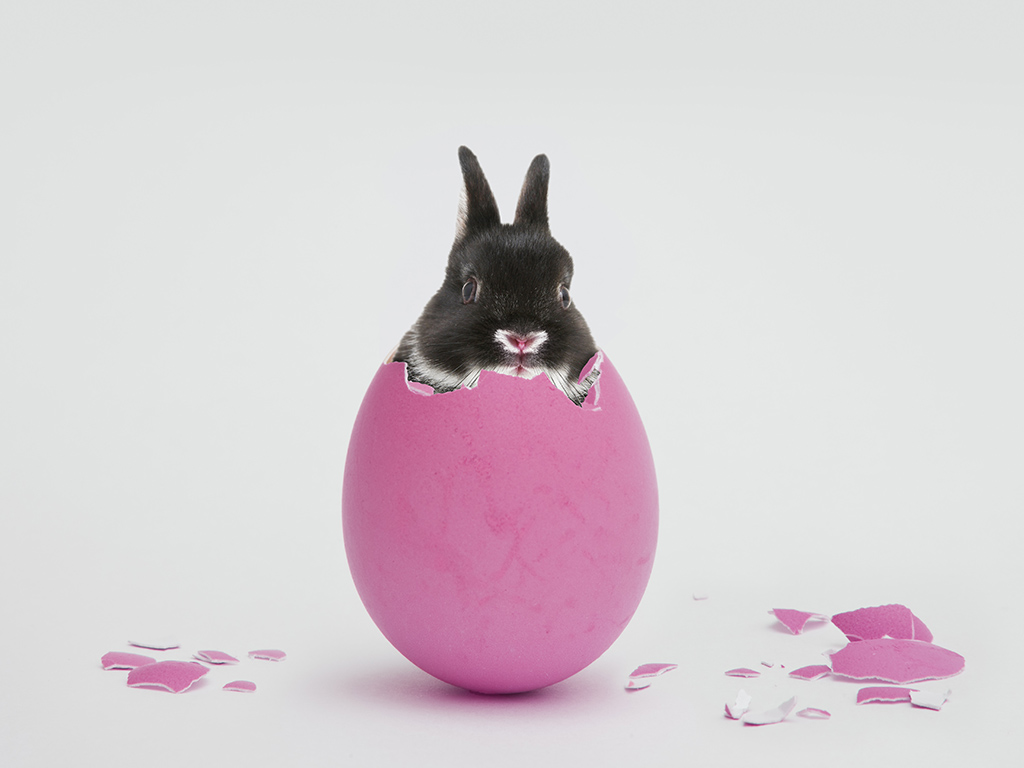The Easter bunny provides a panoply of conundrums: a rabbit that surreptitiously lays colourful eggs around your house or garden, which when unwrapped, prove to be made of chocolate. Where did this mythical creature come from?

The answer to that is as mysterious as Mr. Bunny himself, but there are some theories.
READ MORE: Why you should be vigilant about your pets sneaking chocolate this Easter
Some have suggested that the bunny derives from the mythical Ostara (or Eostre), the Germanic goddess of fertility, rebirth and spring. And considering that rabbits are known for their prolific reproduction capabilities, that makes sense. These same folklorists posit that Ostara gave our beloved chocolate-covered holiday its Easter moniker.
As the monk and scholar Venerable Bede tells it in his 725 A.D. text The Reckoning of Time, Ostara arrived late (as spring is wont to do) on a bucolic scene one day to find a bird dying from the cold. To save the bird, she warmed it up and transformed it into a rabbit. From here, the legend gets murky, but most pagan scholars agree that the rabbit created coloured eggs that were given as gifts to children.
That Ostara chose a rabbit as her mascot presents two conflicting euphemisms. As Katie Edwards points out in an incisive article in The Conversation, rabbits are often linked to the Mother Mary in Catholicism – a character who represents all that is pure and chaste in religion. Yet, rabbits are largely associated with being sex-crazed animals.
“Linking rabbits with purity and virginity is odd since they’re also associated with prolific sexual activity, a reputation Hugh Hefner appropriated for his now infamous Playboy logo,” she wrote. “Hefner claims that he chose a rabbit as the logo for his empire because the bunny is ‘a fresh animal, shy, vivacious, jumping – sexy.'”
WATCH BELOW: These kids hate the Easter bunny

The eggs that the Easter bunny delivers, however, might be the only part of this legend that makes some sense. For one thing, eggs are a symbol of spring since they were forbidden during lent.
“People all over the world, as far as China, have given eggs at spring festivals as symbols of the season, so the Lenten prohibition just absorbed that,” Ronald Hutton, history professor at the University of Bristol, said to online magazine Decoded Past.
The fact that eggs were forbidden during lent could be merely a practicality (as many religious food traditions are). A hen requires 16 hours of daylight to lay an egg, so some don’t produce many eggs during the winter months. By that rationale, eggs would have been scarce.
Another reason is since the Catholic church prohibited eggs under the guise that no meat or foods derived from animals could be consumed during lent, eggs were the only things that would have lasted 40 days without the need for refrigeration. Therefore, they would be the easiest and freshest way to break lent.
The modern Easter bunny as we know him today – a quadruped who walks on two feet and carries a wicker basket filled with colourful eggs – is believed to originate in Germany.
READ MORE: Pez Candy forced to cancel Easter egg hunt due to unruly parents
A German text from 1572 is believed to be the first mention of an Easter bunny: “Do not worry if the Easter Bunny escapes you; should we miss his eggs, we will cook the nest.”
However, as Beate Witzel, a biologist working in the natural history collection in Berlin’s City Museum, pointed out to Germany.info, the bunny had rivals in an Easter fox, stork and crane until the end of the Second World War when chocolatiers settled on the rabbit.
It’s not clear why the bunny won out over the competition, but the fact remains, its long chocolatey ears are hard to resist.




Comments